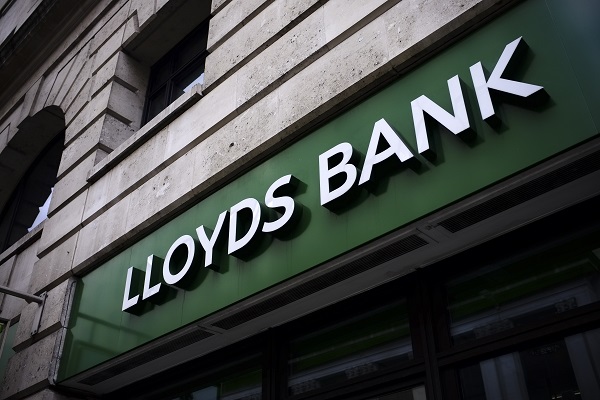Lloyds Bank upbeat but possible turbulence makes investors nervous
These are good numbers from the high street lender, but issues outside its control are problematic and the share price is now down by over a quarter since February. Our head of markets assesses Q3 results.
25th October 2023 08:24
by Richard Hunter from interactive investor

Lloyds Banking Group (LSE:LLOY) is making a good fist of performing within a difficult environment, with its underlying financial strength underpinning progress.
- Learn more: SIPP Portfolio Ideas | How SIPPs Work | Transfer a SIPP
The Net Interest Margin (NIM) shock which plagued Barclays yesterday and inevitably read across to the other UK banks, has unsurprisingly been echoed in Lloyds' third-quarter numbers, although some of the sting may already have been taken out.
For the three months, NIM reduced to 3.08% on mortgage and deposit pricing headwinds, which compares to a number for the first half of 3.18% and 3.14% in the previous quarter. Lloyds has retained its guidance on the outlook for the year at 3.1%, which suggests that some stability has returned.
The new impairment charge for the quarter of £187 million is much lower than the expected £336 million, and takes the figure for the year to date to £849 million. The lesser provision may be well received, based on the implication of an improving economic environment and, equally importantly, on Lloyds’ own experience of loan defaults.
There has been a marginal and contained rise in bad loans spread broadly across the likes of mortgages and credit cards, but the percentages remain small and traditionally the banks have tended to err on the side of caution in setting default capital aside.
- Barclays: bank narrowly beats Q3 profit forecasts
- The Week Ahead: Lloyds Bank, Barclays, NatWest, Standard Chartered
Elsewhere, the key metrics are generally holding up, with the CET1 ratio or capital cushion standing at 14.6% and in line with estimates, and up from 14.2% the previous quarter. The cost/income ratio, which has long been the lowest in the sector, ticked slightly higher to 51.1% which equates to a level of 49.5% for the year to date, and which compares to 48.8% in the second quarter. Operating costs rose by 5% which explains some of the rise, due largely to planned strategic investment and general inflationary pressures.
At the same time, the Liquidity Coverage Ratio of 142% remains strong and stable, while the Return on Tangible Equity (ROTE) line has provided a positive surprise. Against an expected 15.7%, the ROTE came in at 16.9% for the quarter, with the annual target of 14% looking comfortably within the bank’s grasp.
The combined result of the group’s tight hand on the tiller is a net income figure of £4.51 billion, largely in line with both estimates and the previous year’s number. Pre-tax profit of £1.9 billion compares to expectations of £1.8 billion and is a vast improvement to the previous year’s figure of £576 million. The previously announced £2 billion share buyback programme has now been completed, while a dividend yield of 6.2% adds to the unquestionably attractive shareholder returns which Lloyds provides.
Meanwhile, the move towards a more digital business will reap large rewards as the process evolves, with the closure of office space and indeed branches a reflection of the times as customer behaviour changes. This improves the longer-term outlook, although in the more immediate future there are other challenges to grapple with, not least of which is the perception that Lloyds is something of a barometer for the UK economy.
The group has backed its full-year guidance, but pockets of doubt remain. As with its competitors, there has been a limited exodus as savers chase higher rates elsewhere in an increased interest rate environment. For Lloyds, outflows from its current account balances of £9.4 billion reflect this backdrop, although the number has been partially offset by customers choosing to stick with Lloyds, such that its increase in Wealth and savings balances has increased by £5.2 billion.
- Insider: trio splash £140,000 on shares
- Stockwatch: a share for experienced speculators
- Where to invest in Q4 2023? Four experts have their say
Despite its own valiant efforts, Lloyds has suffered from factors beyond its control. The banking turmoil earlier in the year and the highly uncertain outlook for UK economic prospects have weighed on the share price, which has fallen by 17% over the last six months. Over the last year, the loss is more contained, with the shares having dipped by 5%, although this compares unfavourably with a gain of 5.4% for the wider FTSE100 over that period.
Market consensus more recently has also cooled on what could be a turbulent time to come and in the absence of any major positive surprises in this update now stands at a 'hold', albeit a strong one.
These articles are provided for information purposes only. Occasionally, an opinion about whether to buy or sell a specific investment may be provided by third parties. The content is not intended to be a personal recommendation to buy or sell any financial instrument or product, or to adopt any investment strategy as it is not provided based on an assessment of your investing knowledge and experience, your financial situation or your investment objectives. The value of your investments, and the income derived from them, may go down as well as up. You may not get back all the money that you invest. The investments referred to in this article may not be suitable for all investors, and if in doubt, an investor should seek advice from a qualified investment adviser.
Full performance can be found on the company or index summary page on the interactive investor website. Simply click on the company's or index name highlighted in the article.